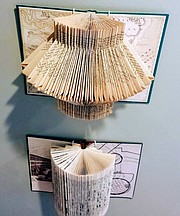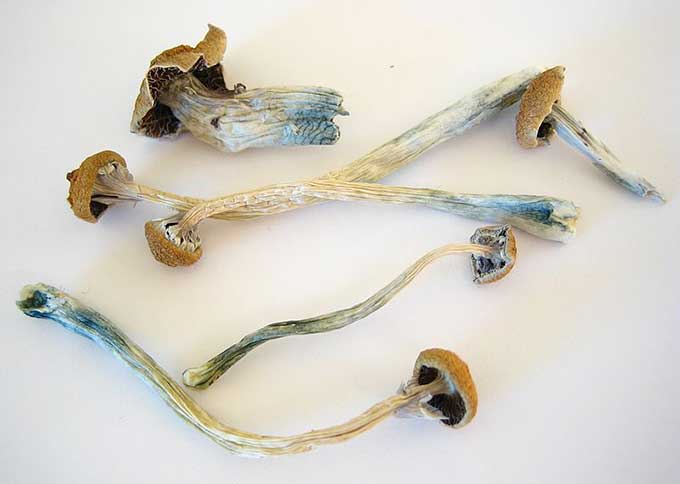
No building escaped shell damage in this neighborhood.
A set of 56 glass lantern photographic slides, offering a remarkable insight into the devastation of German-occupied France in World War I, has been listed for sale on AbeBooks.
These small slides, roughly 2x2 inches, were viewed by being projected through a so-called 'Magic Lantern' and appear to have been taken by an anonymous amateur photographer.
The pictures depict Northeastern France under German occupation. The imagery is somber, particularly the shelled ruins. There is widespread destruction with buildings reduced to huge mounds of rubble. Several images show cemeteries filled with crosses marking what we presume are German graves. German troops are pictured at work and at ease. Some civilians can also been seen.
"To the best of our knowledge none of these images has been reproduced," said Marc Kuritz of Churchill Book Collector, who is offering the glass slides for sale priced at $1,600.
The slides are almost certainly German in origin. There is an image of a German soldier posing with a woman and another image of the same lady in a fur collar next to a wall with a peeling French poster. One image features a line of Sturmpanzerwagens, a type of German tank, which dates this image to 1917 or thereafter.
Continue reading
I do not expect any of my readers to have $1,600 to spare to buy photographs from 100 years ago but I thought this was really interesting.
=============================
via Boing Boing by Andrea James

Master luthier Mark Erlewine takes us through the fascinating process of repairing Trigger, the same guitar Willie Nelson has played for nearly 50 years.
Continue reading and watch the video
=============================
via the New Statesman by Kathleen Jamie
Story of author's time with his family in the island nation details a political awakening.
A contemporary once saw Louis and Fanny Stevenson, with Fanny’s son Lloyd, strolling barefoot along a Samoan beach. With their shawls and shells, floppy hats, pyjama suits and banjo, they could have been 1960s hippies. Indeed, the writer mistook the trio for wandering players. But Stevenson was already the famous author of Treasure Island and The Strange Case of Dr Jekyll and Mr Hyde. He was wealthy, too. An only child, he had recently inherited from his father, despite the elder Stevenson’s alarm at his son’s lifestyle and choice of spouse: the older, divorced mother of three, Frances Van de Grift Osbourne.
Continue reading
=============================
via Boing Boing by Rusty Blazenhoff

Here’s something you don’t see every day: a typewriter that hammers out musical notations. Made for use with music staff paper, the Keaton Music Typewriter was first patented in 1936 by San Francisco’s Robert H. Keaton for use by composers, arrangers, teachers and students.
Continue reading
=============================
via Library Link: Jennifer Forker (The Associated Press) published in The Daily Courier

This undated photo provided by Candice Caldwell shows book folding projects hanging on the wall of her Chicago home. Turning a book into three-dimensional sculpture can create a beautiful conversation piece.(Candice Caldwell via AP)
Books have more uses than might be obvious. Sure, you can press flowers in a heavy one and set out the pretty ones as decoration. You can read the darn things. But have you tried turning a book into three-dimensional sculpture?
The process can be quite simple; the result a beautiful conversation piece.
There are many permutations of book folding, an art form that involves folding pages of a hardcover book – sometimes combined with cutting the paper – within the book’s own binding. The finished work pops off the page three-dimensionally, and may be hung on a wall or placed atop a table. Groupings of three or more are the most dynamic.
“They look impressive on the wall,” says Candice Caldwell of Chicago. “A group of six of these on the wall together can look really beautiful, and they’re just really simple folds.”
Continue reading
=============================
The pursuit of digital readership broke the New Republic – and an entire industry.
via Arts & Letters Daily: Franklin Foer in The Atlantic

Chris Hughes was a mythical savior – boyishly innocent, fantastically rich, intellectually curious, unexpectedly humble, and proudly idealistic.
My entire career at the New Republic had been spent dreaming of such a benefactor. For years, my colleagues and I had sputtered our way through the internet era, drifting from one ownership group to the next, each eager to save the magazine and its historic mission as the intellectual organ for hard-nosed liberalism. But these investors either lacked the resources to invest in our future or didn’t have quite enough faith to fully commit. The unending search for patronage exhausted me, and in 2010, I resigned as editor.
Then, in 2012, Chris walked through the door. Chris wasn’t just a savior; he was a face of the zeitgeist. At Harvard, he had roomed with Mark Zuckerberg, and he had gone on to become one of the co-founders of Facebook. Chris gave our fusty old magazine a Millennial imprimatur, a bigger budget, and an insider’s knowledge of social media. We felt as if we carried the hopes of journalism, which was yearning for a dignified solution to all that ailed it. The effort was so grand as to be intoxicating. We blithely dismissed anyone who warned of how our little experiment might collapse onto itself – how instead of providing a model of a technologist rescuing journalism, we could become an object lesson in the dangers of journalism’s ever greater reliance on Silicon Valley.
Continue reading
=============================
via Interesting Literature
A reading of a classic unfinished poem
‘Kubla Khan’ is perhaps the most famous unfinished poem in all of English literature. But why the poem remained unfinished, and how Samuel Taylor Coleridge came to write it in the first place, are issues plagued by misconception and misunderstanding. How should we analyse this classic poem by one of the pioneers of English Romanticism?
Continue reading
=============================
Treasure and intrigue: scientists unravel story of 1740 Kent shipwreck
via the Guardian by Maev Kennedy
Excavation has brought up silver dollars, pewter jugs and a mystery chest from Rooswijk wreck in Goodwin Sands

Coins found in the wreck of the Rooswijk.
Photograph: Zeeuws maritiem muZEEum/PA
Covered with seaweed, bits of shell and pebbles concreted into lumps of corroded iron, the wooden seaman’s chest from the Dutch East India ship Rooswijk remains tantalisingly locked after almost 300 years. It will take months of conservation work before the archaeologists discover whether it holds some of the silver treasure the ship was carrying, or a long dead sailor’s old socks.
A joint excavation by divers and scientists from Historic England and the Cultural Heritage Agency of the Netherlands is unravelling the story of the last hours of the Rooswijk, which ran aground and sank in the Goodwin Sands off Kent in January 1740 with the loss of every life on board – almost 250 sailors, soldiers and passengers.
Continue reading
=============================
Scientists finally discover how to synthesize magic mushrooms' active ingredient, psilocybin
via Boing Boing by Mark Frauenfelder

In 1943 Sandoz chemist Albert Hofmann became the first person to synthesize (and take) LSD. He was also the first person to isolate and identify psilocybin, the main psychedelic component in magic mushrooms, almost 60 years ago. "Yet no one has been able to unravel the enzymatic pathway the mushrooms use to make psilocybin, until now," reports Stephen K. Ritter of Chemical and Engineering News.
Continue reading
=============================
The Story of Classic Crime in 100 Books
via 3 Quarks Daily: Michael Dirda at The Washington Post

(Poisoned Pen Press)
In 2015, Martin Edwards brought out “The Golden Age of Murder,” a history of Britain’s Detection Club that went on to sweep nearly all of crime writing’s nonfiction awards. Little wonder. It is an irresistible book, packed with insider anecdotes about a secretive association boasting such celebrated members as G.K. Chesterton and R. Austin Freeman (creators of Father Brown and Dr. Thorndyke); the crime queens Dorothy L. Sayers and Agatha Christie; that master of the locked-room puzzle, John Dickson Carr; and, not least, co-founder A.B. Cox, equally accomplished whether writing as the witty Anthony Berkeley (“The Poisoned Chocolates Case”) or the bone-chilling Francis Iles (“Before the Fact”).
Continue reading
No comments:
Post a Comment